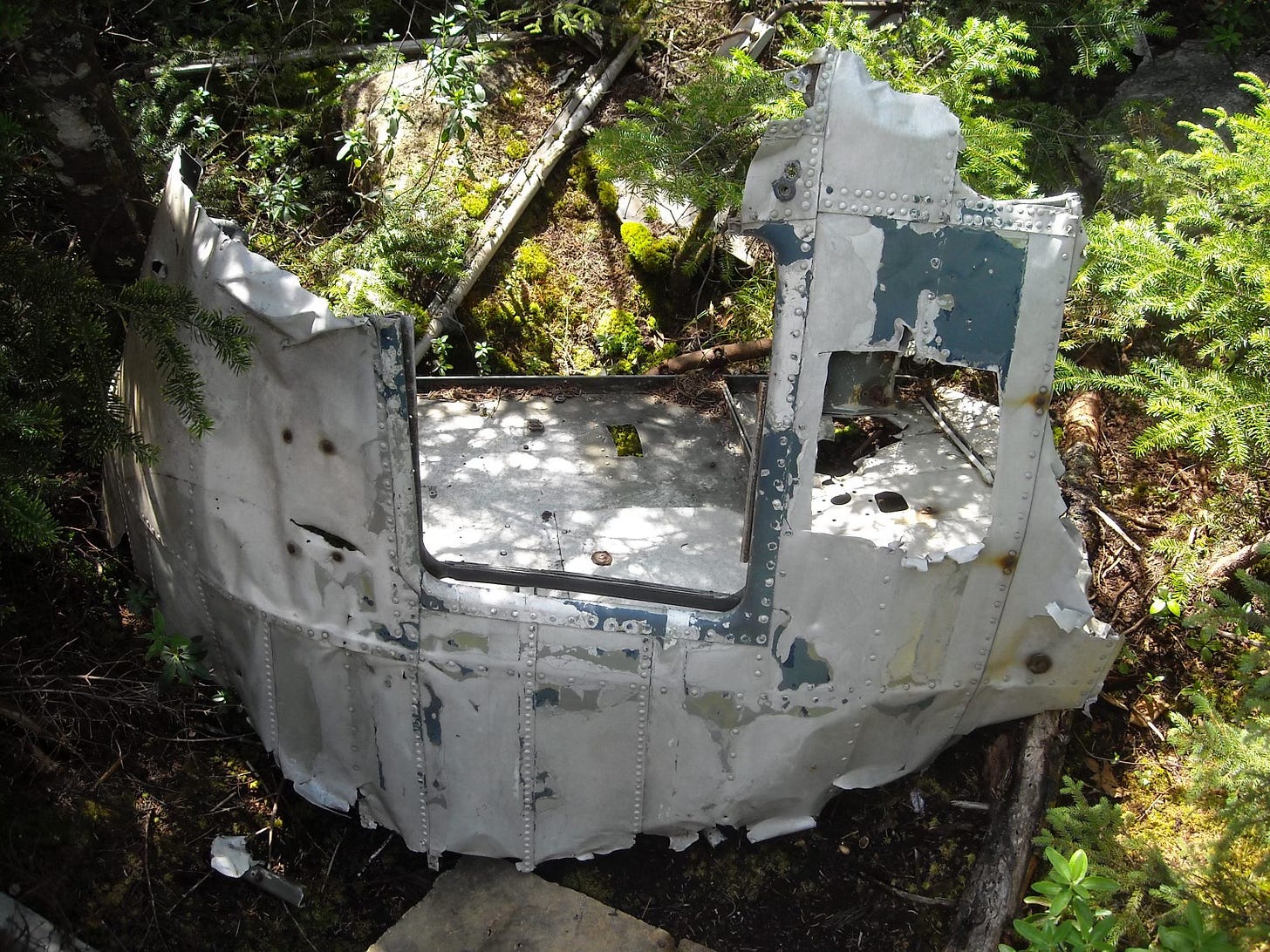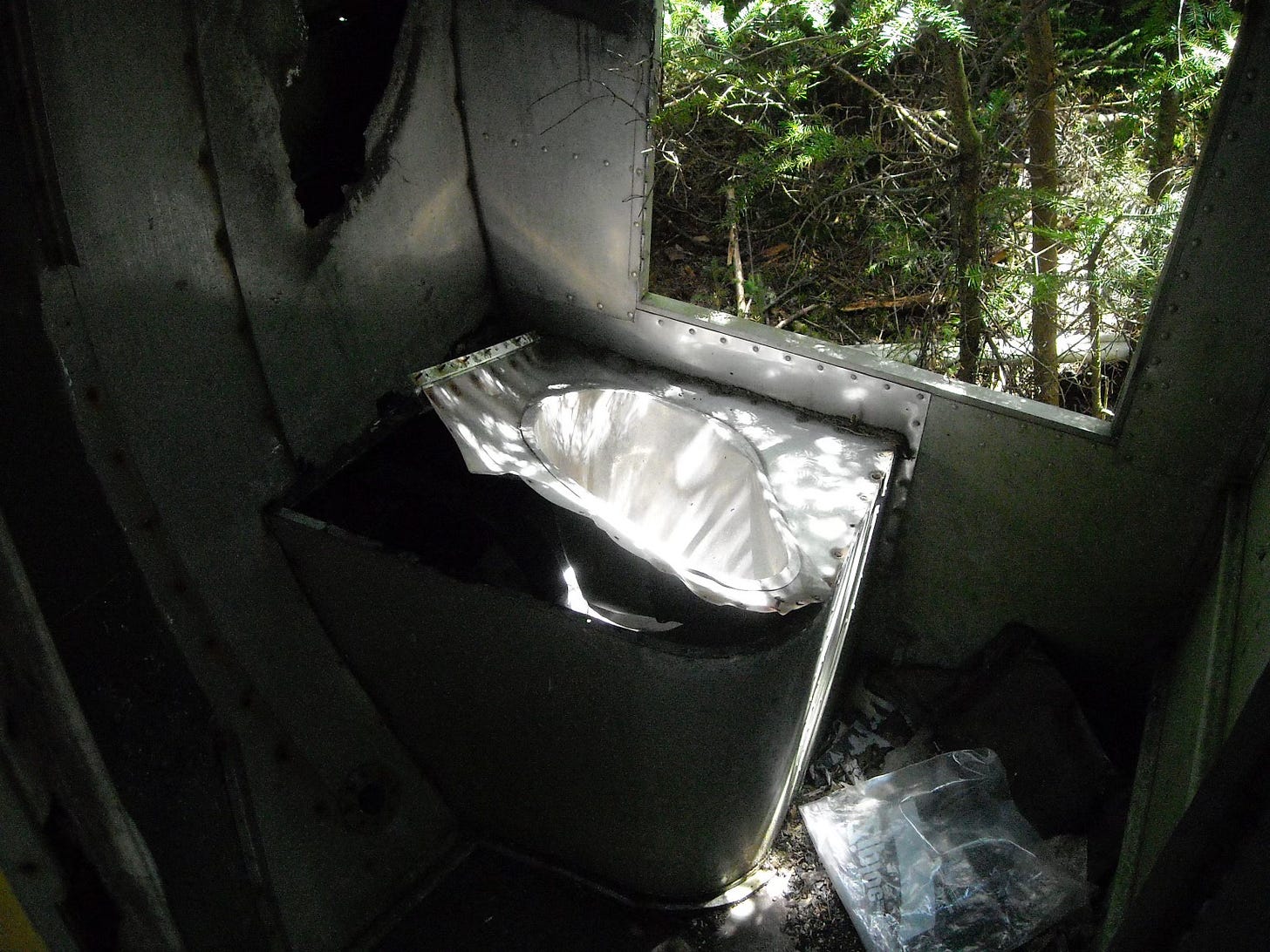
Today, a reflection on an somber, but fascinating trend: Hiking to New Hampshire plane wreck sites.
There are a lot of them in NH, a couple dozen or so. Some are easy to get to, some difficult. But even the tough hikes are becoming easier because hiking to plane wreckage is becoming a destination hike, like hiking to a summit or finding rocks or fire towers.
I have some thoughts about this as you might imagine. But first, to those of you not familiar with this trend, I wanted to share some photos taken by my friend Peter Ferraro.
Pete’s been hiking to New England plane crash sites for years. He said he likely has made it to 15 or more. He’s a pilot himself and has taken it upon himself to visit military plane wreck sites to plant flags in honor of the men who died there.
“It’s never forgotten that these wreck sites are places where men died, and their families were left without fathers, brothers and sons,” he told a reporter for the Andover Beacon a couple years ago.
I met Pete because of my book, The Adventures of Buffalo and Tough Cookie. In it, myself and my oldest daughter hiked to the summit of Mount Success in northern New Hampshire. There’s an old wreck up there, a DC-3 that went down in lousy weather in November of 1954. Five of the seven souls aboard survived and the wreckage is still there.
The weather was also lousy when Tough Cookie and I were up there so we never made it to the wreck, but Pete and his son did. I’m posting some of his photos below. You can still climb to this site and many hikers do.
Pete’s a good guy and he has the right idea. These sites are different from other destination hikes, different even from visiting cemeteries I think. Folks suffered terrible hardship during these incidents and it’s tough to reconcile that with a fun day of hiking, especially with kids. Pete’s goal of memorializing these places feels like a better solution.
A few years ago, I had suggested to an aviation buff friend of mine that maybe their ought to be a guide book to these sites and he felt that wasn’t quite appropriate given the circumstances of how these sites came to be. Plus, most of these places were not on family friendly locations and required terrain climbing or GPS knowledge. After some thought, I tend to agree.
Perhaps it’s best to let the ghosts be. What do you think? I’d love to hear what you think. Also, if you’ve been to any of these sites and have pictures or thoughts you’d like to share, that would be great!








These sites should not be listed in a book. They are not like the fire towers or the 100 highest. Let people seek them if need be. It is like going to Civil War sites, Valley Forge or even small Red Bank Battlefield in NJ. When you go to these areas a feeling comes over one that is difficult to explain, which is like a connection. It joins past and present. If anything, it restores empathy in the soul.
The B18 located on the slopes of Mt. Waternomee in Woodstock is a fairly easy trek, though somewhat steep on the last portion. Many visit the site now, but are surprised with the few parts of the plane remaining. The Norden bomb sight was removed quickly due to its obvious importance. The paucity of remnants is owed to the fact that the military hauled away the biggest piece of the fuselage and local residents walked off with much of what remained. I found it to be a very somber place...